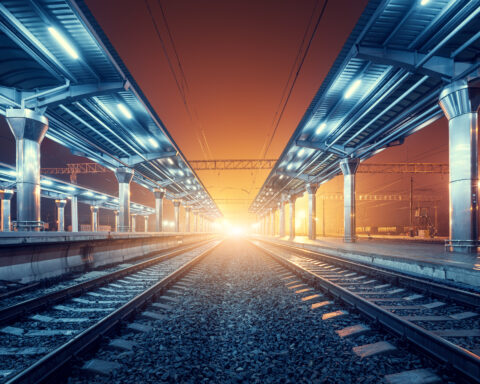The geographical situation of this Central European country was designed for green energy. The alps and many rivers allow for the construction of wind farms and hydropower plants. Also, solar farms play an essential role in the country’s energy supply. The industry grew by a third between 1990 and 2015. In 2016, Austria already met its 2020 energy targets; as of November 2021, its green electricity share was a whopping 77%!
This impressive result comes mainly from the wind and water. However, each sector is heavily invested in. You’d think the nation should give itself a great pat on the back and be happy with the situation. Not Austrians! They continue pushing to turn their electricity 100% green by 2030. As things stand – it is a plan more certainly possible to execute. Let’s look at each energy source to understand why the country can afford to be this optimistic.
Energy-giving water
If you know who Nicolai Tesla was (he is credited to have constructed the first functional hydropower plant at Niagra falls), then you know that hydropower has been around at least since the 19th century. It is, in fact, the oldest source of green energy, which uses natural water currents to generate power. In Austria, this is the main source of green energy providing about 60% of total generated electricity.
The Alpine landscape, with over thirteen peaks reaching 3000 meters above sea level and a further thirty-four over 2000 meters, provides strong currents, constituting a stable energy source. This type of renewable energy source has a long tradition in Austria, starting from industrial establishments, such as mills and sawmills, becoming a cornerstone of today’s power supply in the country.
Given by the wind
However little 8% of energy in the mix may seem in comparison to hydropower, wind power is still Austria’s second most important electricity source. Its biggest growth to date occurred in 2003, when the construction of new windmills tripled the MW generated by wind. The wind energy source is expected to double by 2030 and meet 26% of the energy demand. To put it into perspective: currently, wind energy produces circa 3,300 MW which is enough to meet the energy demand generated by about 50% of Austrian households.
This was achieved practically just 20 years (the first wind turbine was activated in 1994, but it was not until 2002 that the wind sector boomed). And to think that in the beginning, experts claimed Austria’s terrain was not suitable for wind energy when, in fact, wind power provides more electricity than the never-activated Zwentendorf nuclear plant would.
Bioenergy still make its mark
The incredibly green Austria recycles approximately 63% of its waste. Thus, biomass energy provides about 10% of electricity and many jobs, with over 22,000 people employed in the sector. A Vienna University of Technology in 2017 explicitly stated that the bioenergy sector should not be underestimated, for its role in Austria’s energy mix will only increase.
Draw more from the sun
One of the modest contributors to the energy mix, solar energy in Austria supplies about 2% of electricity. Construction of photovoltaic farms slowed down considerably during the COVID-19 outbreak, but it made an impressive recovery, doubling its size in 2021. Most solar power plants are located in the country’s East, and at present, total energy courtesy of the sun amounts to 2783 MW. This value is expected to reach about 10,000 MW by 2030. As the Austrian government is decisively for solar energy, there are currently encouraging the construction of photovoltaic panels.
The race goes on
Impressed? You should be! Austria is in the lead in the race for fully clean electricity. Seeing that it is more than likely going to win, it has already set itself new goals. Austria hopes that due to its location, its technology will be the green sparkle that shall light up the neighboring countries, including the nearby Three Seas States (Czechia, Hungary, Slovenia, and Slovakia). But why stop there? By 2040 Austria aims to reach 100% neutral carbon emissions. It seems that all is possible for Austrians in the fight for a greener planet.







